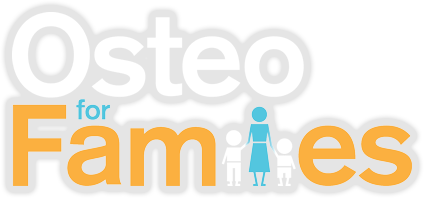DISC INJURIES: Annular Tears, Disc Bulges, Disc Prolapse. What are the different types of disc injuries? What do I do if I have a disc injury?
Disc injuries are the 2nd most common cause of back pain. Often we only hear about disc bulges but there are different types of disc injuries and the symptoms and recovery differs depending on the severity of the injury.
As Osteopath’s we often see patients with disc injuries which commonly occur in the neck or low back, but can occur throughout the whole spine. It is important to understand your injury and the multiple lifestyle factors that can influence your pain and recovery.
What is an intervertebral disc?
An intervertebral disc is a fibrocartilgenous cushion. Sounds fancy but just imagine a cushion, that sits between each vertebrae (bones of your spine).
The intervertebral disc supports and allows movement through the spine and acts as a shock absorber.
It is made up of a jelly like substance in the middle called the nucleus which is surrounded by strong bands of tissue called the annulus fibrosis.
What are the types of disc injuries?
The types of disc injuries can range from internal disc derangement often with minimal pain to disc prolapse or disc sequestration, all with different symptoms and healing time frames.
Internal disc derangement and annular tears involve changes to the annular fibrosis part of the disc and is more common in the older population.
In a disc bulge or protrusion, the nucleus (middle part of the disc) has moved into the weakened annulus fibrosis leading to a bulging of the disc.
With a disc prolasps or extrusion the annulus fibrosis has torn and the nucleus has moved outside of this annulus fibrosis but it is still attached to the disc.
In a disc sequestration, there is again a tear in the annulus fibrosis. However, in sequestration the nucleus has moved out beyond the outer boundaries of the annulus fibrosis, with the nucleus no longer being attached to the original disc.
What are the symptoms?
The symptoms of a disc injury is largely dependent on the severity, some patients may have no pain or other symptoms at all.
A person with an annular tear may complain of stiff, dull achy back pain, either centrally or on one side and may affect your bottom region. Often it is worse in the morning, feels restricted through movement and is worse with long periods of sitting or standing and improves with movement.
A disc prolapse can present very differently with acute onset of pain which is usually described as sharp and often felt through the bottom and the back of the legs.
Due to possible irritation of surrounding nerves patients may experience numbness, pins and needles, changes in sensation, weakness or decreased function.
If you notice low back pain with numbness on the inside of your thighs or changes in your bladder or bowel habits visit a medical professional immediately
A disc sequestration has similar symptoms to a disc prolapse but often these symptoms are more severe. A disc bulge can have symptoms ranging from an annular tear to a disc prolapse.
How long do disc injuries take to heal?
An annular tear can take 1- 6 weeks to heal, where as a disc bulge or prolapse can take a minimum of 6-12 weeks to heal. Everyone is different and multiple factors affect healing times so the healing process and the presence of pain may last longer.
What causes disc injuries?
Chronic disc injuries can be due to the natural ageing of the disc where the disc becomes progressively more dehydrated therefore it is stiffer and has a poor ability to resist forces making it more susceptible to injury.
Acute disc injuries can occur from major forces such as a fall. They can even occur from picking up a tissue which is the final straw when there is repetitive microtrauma which can occur from things such as lifting.
Should you get an X-ray or MRI for a disc injury?
For some disc injuries imaging may be required, the best form of imaging for a disc injury is an MRI as X-rays do not show discs well.
When interpreting results of an MRI, it is important to remember that there may be findings on the report which don’t always match up with the cause of your pain. Disc injuries and other findings have been found in healthy people with no pain.
What are the treatments for disc injuries?
Treatment for disc injuries will depend on the severity of the injury.
After an osteopath has assessed your back and determined the severity they will discuss with you the different treatment options. These may include the use of soft tissue techniques to reduce tissue tightness, mobilisation to improve joint movement and gentle techniques to calm your system and help it back to recovery.
An osteopath will work with you to help you through the really acute painful stage and support you throughout your recovery. They may also suggest a visit to the doctor for some pain medications.
Moderate rest with low impact activities such as swimming or hydrotherapy can be very helpful in managing low back pain as well as changes to work environments and stress management (See our blog on stress management on our website).
If the type of injury is severe, injections or surgery may be needed to be considered.
If you have any questions about disc injuries or have back pain you think may be from a disc injury, the friendly osteopaths at Osteo for families can help assesses your back and answer any questions you may have.
You can give us a call on 0416 161 411 or book online https://osteo4families.cliniko.com/bookings#service
Foot notes:
https://physioworks.com.au/injuries-conditions-1/bulging_disc
https://www.betterhealth.vic.gov.au/health/conditionsandtreatments/back-pain-disc-problems
https://orthoinfo.aaos.org/en/diseases--conditions/herniated-disk-in-the-lower-back
https://www.mayoclinic.org/diseases-conditions/herniated-disk/symptoms-causes/syc-20354095
NICE guidelines for Low back pain and sciatica in over 16s: assessment and management: https://www.nice.org.uk/guidance/ng59
Written by Mariella Berry


